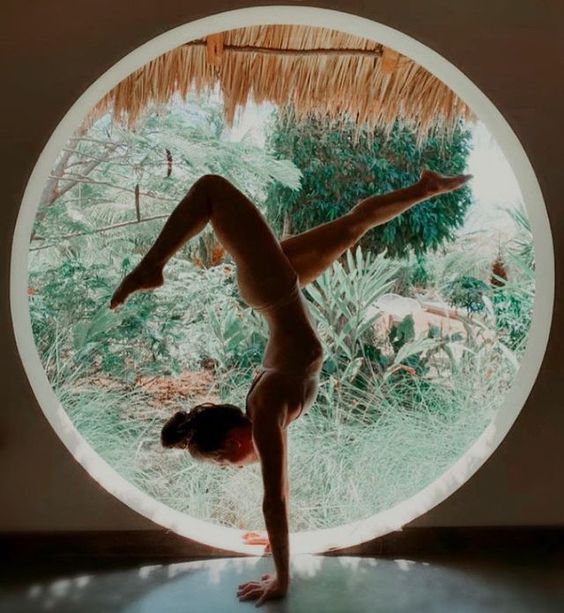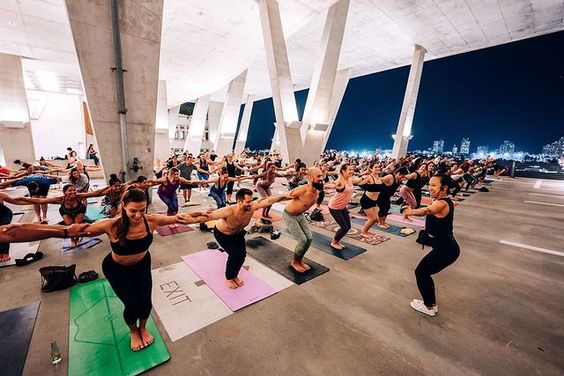Yoga is a practice that has taken over the world. According to Harvard Health Publishing, the amount of Americans partaking in yoga over the years has continued to increase significantly. In 2016, 36 million people were said to practice yoga, a jump from the 20.4 million people in 2012. This practice may have been picked up by western society, but yoga’s origin resides in India.
Over 5,000 years ago, yoga was created in Northern India by the Inus-Sarasvati civilization. The first mentioning of yoga is in the Rigveda, the oldest sacred book of Hinduism. As the practice spread to different regions, yoga went through many changes including the transitions of Tantra Yoga and Hatha Yoga in the Post- Classical time period. In 1947, Indra Devi opened her yoga studio in Hollywood which started the growth we see today.
Julianne Aerhee Byun
Julianne is a yoga teacher who’s passionate about exploring both the world around us and the world within us. She is a co-founder for The Inspired Living, hosts a digital yoga studio called With:in, and also hosts a charity organization called Rise and SoulShine. Julianne is busy, to say the least, that’s why we’re even more grateful she took the time to educate us on her yoga journey.

When did your journey with yoga begin?
My journey with yoga began while I was in college at the University of Miami. I was a sophomore at the time and dancing professionally with the NBA Miami Heat. I had dabbled in yoga on and off, practicing through random DVDs at home and wellness centers, but it never really stuck. My first season dancing for the HEAT took a pretty big toll on my body. At the age of 19, I was experiencing severe back pain for the first time in my dance career. I began seeing a chiropractor regularly, and it was around this time that a new yoga studio opened up across the street from campus. I happened upon a Groupon for a 30 day special and figured I’d give it a shot.
I remember my first hot power class in that studio sweating, mid-plank, thinking, “This is how I die, this is so f&*$in hard.” Then I got to savasana and felt the most incredible kind of bliss. And so I returned and then returned. Asana was what I call my gateway to yoga. The physicality of it enthralled me. I loved the challenge yoga asana provided as well as the space it created for curiosity and play. I also noticed with consistent practice, my body was getting stronger and staying structurally aligned. I was dancing pain-free and no longer needed to go to a chiropractor.
While the physical practice of yoga initially brought me onto my mat, everything that started to reveal underneath, through, and beyond the body has kept me anchored in this tradition for the last decade. What began as a sweaty workout became a place for me to listen to the quiet wisdom of my heart, and for the inner workings of my mind to illuminate in ways that are both uncomfortable and massively enriching. I want to say that yoga found me at a time when I was ready to find it because the practice of yoga requires both action and receptivity. It asks us to practice with discipline but without attachment and to rest in the mystery of it all.
Do you have any roots within the practice of yoga?
My parents are deeply spiritual and raised me to have a spiritual practice. Some of my earliest memories are in the church. It took a while for me to reconcile Christianity with the Yoga tradition in my adulthood, but I now see my parents as yogis in how they live and devote their lives to their community and Spirit. If prayer is talking to God, then meditation is listening to God.

I see yoga as a kind of indoctrination that ultimately ends the search for the freedom we all desire. My parents also grew up expressing themselves through movement – my mom a Korean folk dancer, my dad a martial artist – so I feel I had a certain predisposition to movement practices.
How do you think yoga should be perceived?
I feel that yoga is a practice of living. Asana, or the physical posture practice, is one small branch of yoga, and it serves as a potent space for us to get deeply connected to our bodies. It aims to align our skeletal form and flow, ultimately allowing for what lives underneath and beyond the body to be felt and known.
However, the physical asana needs to be supported by the whole practice and study of yoga, including, but not limited to – breathwork, meditation, contemplation, and observance of the ethics and moral codes that yoga is founded upon. Yoga is not just about how we move on our mats. It’s about how we move in and relate to the world around us. It’s about self-realization and living into our potential and purpose. It’s about how we serve our communities. It’s about how well we can love ourselves and one another. And maybe most importantly, it’s about how well we can rest in the discomfort of the unknown and how grounded we can stay when we encounter chaos and complexity.
Yoga has gained quite a bit of popularity in recent years. Has this affected your career? What have you seen from this rise in yoga popularity?
It has definitely affected my career. The rise of yoga in popularity has allowed me to combine my passions for serving my community, traveling, and sharing the teachings of yoga in a meaningful way. From leading teacher training to retreats to donation-based classes that support local nonprofits, I feel grateful to call yoga my life’s work.
While I love that more people are practicing yoga, and I firmly believe that more people getting on their mats is a good thing, yoga has become a lucrative part of the wellness industry. Unfortunately, as a result, I’ve seen the teachings of yoga sometimes get watered down and become more about business and fitness than about serving people and communities with the tools and techniques for impactful transformation to be experienced. As teachers, I feel our responsibility is to study and teach the whole spectrum of yoga to support the communities that will flourish from yoga’s continuous popularity growth.

Do you personally believe it is important for those who practice yoga to know the history? Why or why not?
I personally believe it is important for those who practice yoga to know its history. Understanding the roots of yoga, and in many ways, its complex origins, gives both context and depth to the tradition so that we can apply the practices with integrity and respect in our modern world.
We want to thank Julianne for her insight into the yoga world. Will you be learning more about yoga’s origins? Do you currently or do you plan on practicing yoga? How have your experiences with yoga been? Please let us know in the comments and on our Instagram @cada_culture.
While you’re here, catch up on our other blogs and leave us your thoughts.

